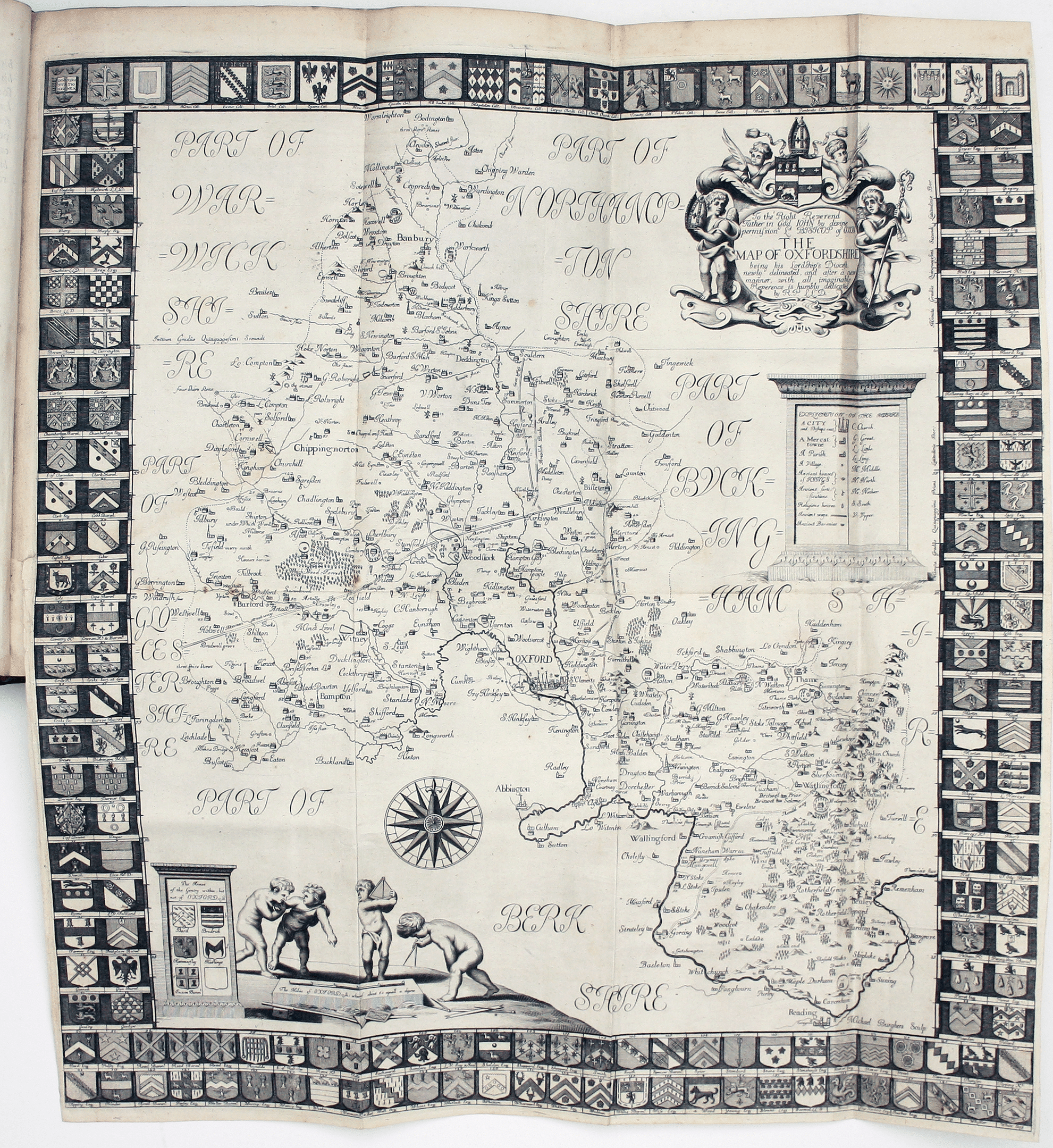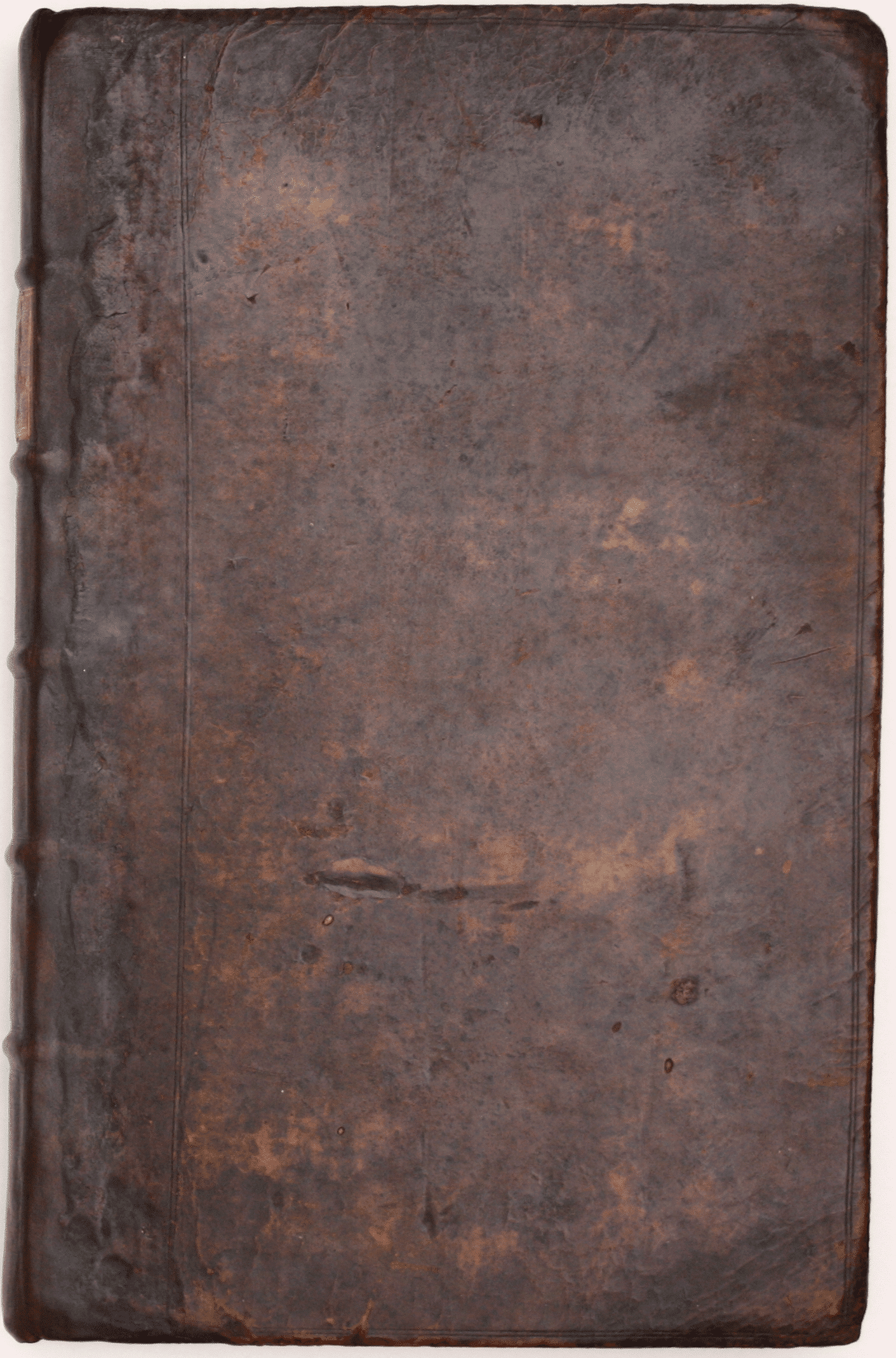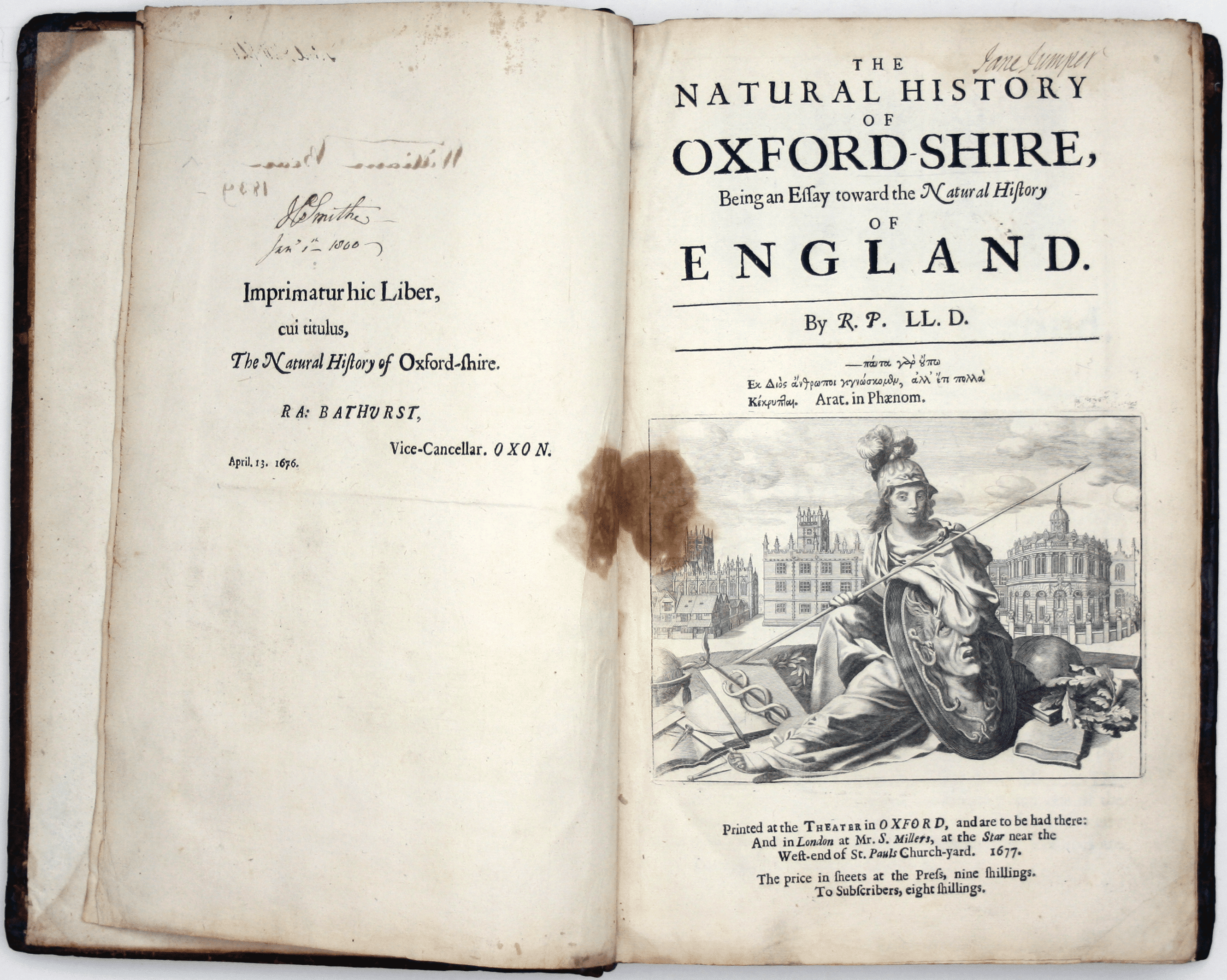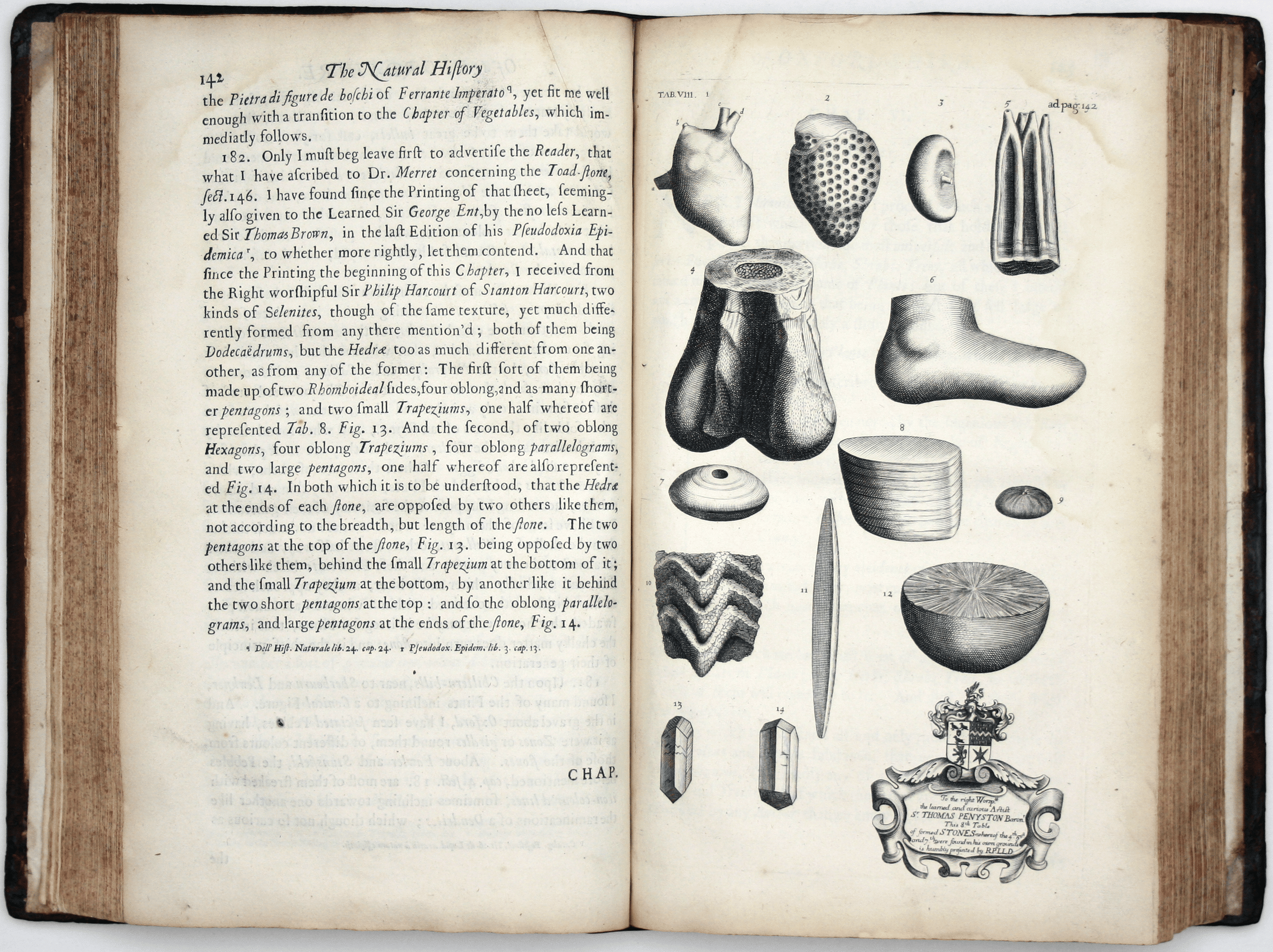
Plot’s Oxfordshire – First Edition
SKU: 9270
Title:
Plot’s Oxfordshire – First Edition
Date of publication:
Binding:
Publisher:
Author:
Edition:
Plot, Robert: The natural history of Oxford-shire, being an essay toward the natural history of England. By R.P. LL.D. Oxford: Printed at the Theater… 1677
Plot had antiquarian interests, but as Madan notes he was a member of the ‘new scientific school’ which is most closely associated with Robert Boyle, and Plot’s work is ‘a singular medley of natural philosophy, palaeology, and the animal, mineral and vegetable kingdoms’. Read more
His Natural History is noted for its attempts to describe and understand fossils, a number of which are illustrated including the earliest known depiction of a dinosaur bone (plate 8, fig. 4); after a lengthy discussion (pp. 132-139) Plot dismissed the idea that his ‘petrified’ thigh bone was a naturally formed rock which just happened to look like a bone, or had belonged to a Roman elephant, and suggested instead that it was the bone of a giant.
The plates are dedicated to various figures, many of them local landowners so that Plot was able to say that at least some of the items illustrated had been found in their grounds.
Plot surveyed and drew his own maps according to ODNB, and the most magnificent illustration in the book is his folding map of Oxfordshire (also engraved by Burghers), which remains one of the most decorative printed maps of the county. Bordered by 176 coats of arms of Oxford colleges, towns and local members of the nobility and gentry, Plot claimed in his preface that it was an advance on all previous maps of Oxfordshire, and it is dedicated to John Fell, who had recently become Bishop of Oxford.
Fell was one of the great figures in university life after the Restoration, and both Plot and Burghers had benefited from his patronage: Plot in his travels and research; Burghers as it was Fell who encouraged Dutch and Dutch-trained engravers such as David Loggan (and Burghers himself) to settle in Oxford. Fell drove the construction of the Sheldonian Theatre and was responsible for rehoming the university press inside it, and it was largely thanks to Fell that it became one of the leading publishers of illustrated and scientific books - Plot's Oxfordshire being an early landmark.
Plot was rapidly elevated to fellowship of the Royal Society and became the first keeper of the Ashmolean Museum, and in a remunerative career with the university press spanning half a century Burghers came to be regarded as 'the best general engraver in England' (Thomas Hearne).
Condition & Materials
First edition, folio. pp. [xii], 358, [xii] + folding map and 16 single-page plates; lacks 3B2 (blank final leaf); neatly closed tear to map, without loss, where the map is tabbed into the book; old repair to plate 3, reinforced on the verso with paper; light waterstaining, mostly affecting upper and outer margins at intervals throughout; leather stain affecting gutter of title-page and facing imprimatur leaf, where the leather lettering piece had been loosely inserted for safe keeping, after becoming detached from the spine; contemporary blind-ruled calf, rebacked, with old lettering piece restored and replaced. Old ownership signatures of ‘Jane Jumper’ on title-page, and ‘H Smith 1800’ and ‘William Bean 1839’ on the imprimatur leaf. A likely candidate for the latter is Yorkshire naturalist and geologist William Bean (1787-1866) who sold his collection of fossils to the British Museum and Yorkshire Philosophical Society. A few marginal pencilled annotations are probably in his hand.
Four variants of the title-page are known; our example abbreviates Plot’s name to his initials, R.P., and carries the price at the foot of the page: ‘The price in sheets at the press, nine shillings. To subscribers, eight shillings’. 750 copies were printed in total, and the different states do not confer any known precedence.
References
Madan, Oxford Books, 3130; ESTC R7620 Read less





